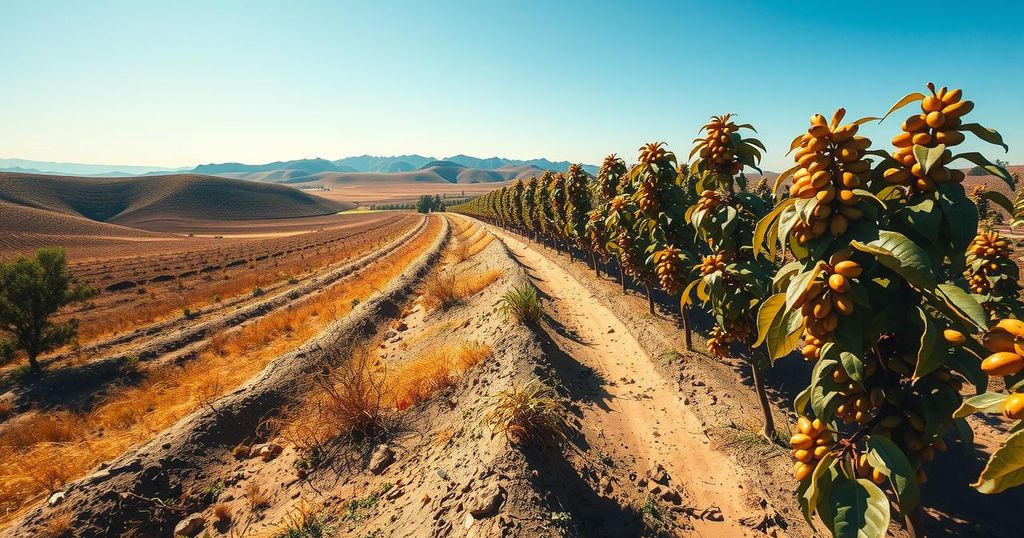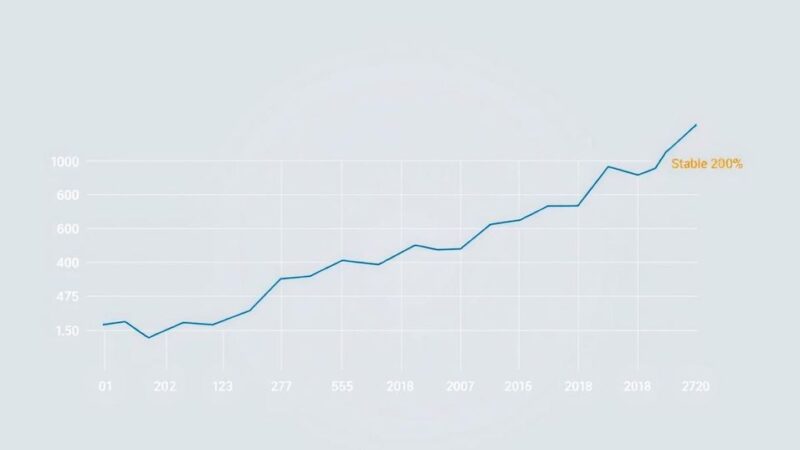Brazil’s drought is causing a surge in coffee prices due to reduced yields. Analysts are worried about the implications for global supply as demand stays strong. Farmers are exploring adaptive practices to mitigate drought impacts, highlighting the volatile relationship between weather patterns and coffee market dynamics.
Brazil, one of the largest coffee producers in the world, is facing drought conditions that are significantly impacting coffee prices. The lack of sufficient rainfall in key growing regions is raising concerns among farmers and traders alike. Without enough rain, coffee plants struggle, often leading to lower yields. Analysts believe this situation could push prices higher as demand continues to outpace supply. As a result, many are keeping a close eye on weather forecasts to gauge potential impacts on the coffee market.
The coffee market is notoriously sensitive to climatic conditions, particularly in Brazil. This year, the forecast for dry weather has exacerbated the existing issues, given that many coffee growers rely heavily on a consistent rain pattern. Reports indicate that some regions are already experiencing stress, which could lead to a turn in coffee quality and volume. Stakeholders in the market are aware that higher prices typically ensue from reduced supply, especially under such pressing circumstances.
Coffee prices on the global market have already shown an uptick, reflecting these mounting pressures from Brazil. It’s not just about local farmers; the global coffee supply chain could feel the brunt of this drought. Various markets are adjusting their expectations, and analysts are eyeing potential buyer reactions should prices rise significantly. This situation is complicated further by the fact that coffee demand remains strong worldwide, adding another layer to the dilemma.
As changes unfold, traders, farmers, and consumers are trying to adapt. Many coffee producers are looking into ways to mitigate the effects of the drought, such as investing in irrigation or more resilient crop varieties. The hope is that improvement in farming methods could help stabilize vulnerable production areas. However, how quickly these solutions can be implemented remains uncertain, leaving many observers questioning what to expect next in the market.
Market experts suggest that this situation is a wake-up call for coffee growers to embrace innovation for sustainability. The interplay between weather and market prices serves as a reminder of the unpredictable nature of agriculture. With future forecasts remaining uncertain, the way growers approach coffee production may change drastically moving forward. As the industry waits for favorable rains, anticipation over coffee pricing continues to build, leaving many unanswered questions about the short- and long-term implications for the coffee market.
In conclusion, Brazil’s ongoing drought has placed substantial pressure on coffee prices, driven by lower yields and increased production stress. As the demand for coffee remains robust, the potential for elevated prices looms ever closer. The industry’s response, exploring sustainable practices and adaptation measures, will be crucial moving forward. Overall, this development underscores the volatility of agricultural markets in the face of climate change.
Original Source: www.barchart.com






